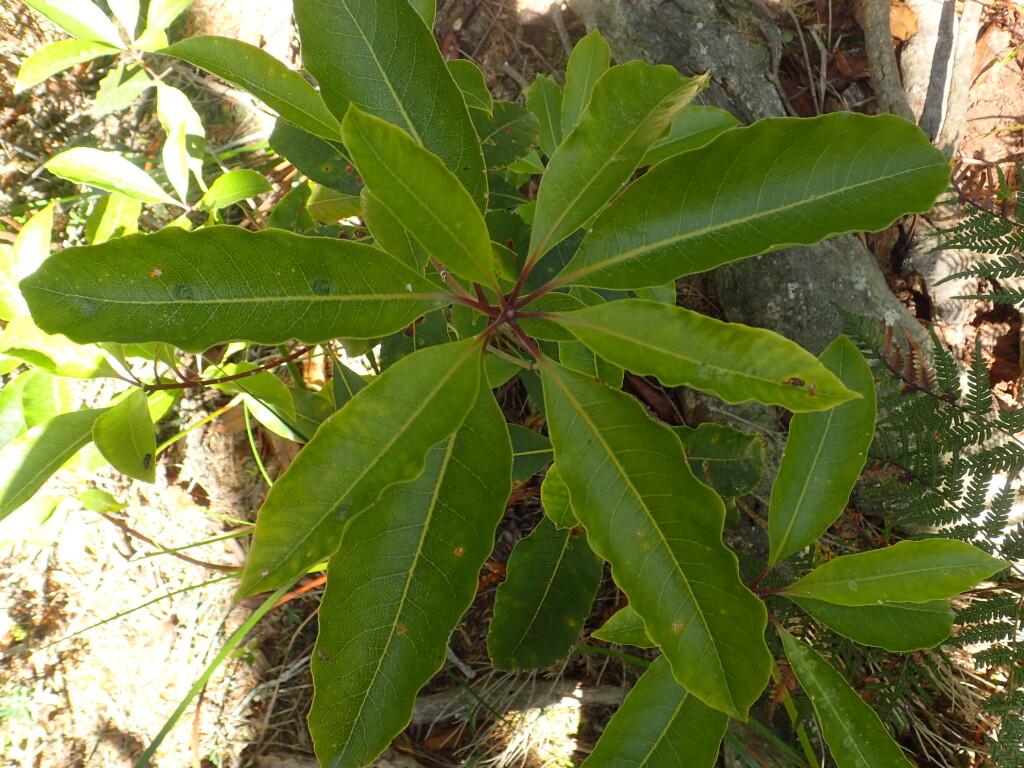Pittosporum undulatum
Vent. Sweet PittosporumShrub or tree to c. 25 m high, usually dioecious, or occasionally apparently male plants producing some fruit. Leaves aromatic, clustered at branch-tips, ovate to oblanceolate, 6–17 cm long, 2–5 cm wide, glossy above, minutely pubescent when young, margins usually undulate. Flowers sweet-scented, in terminal umbel-like cymes on 1–several branches 1–2.5 cm long; pedicels 2–14 mm long; calyx 5–10 mm long, divided to near midway into 5, recurving, often unequal lobes, splitting to base along 1 or 2 lines; petals oblanceolate, creamy-white, recurved apically. Male flowers with corolla 12–18 mm long, narrower than in female flowers, anthers exserted from throat, filaments thick, white, hairy ovary and style ca. same length, stigma slightly knobby; ovules few. Female flowers 12–14 mm long, staminodes present; stigma plump, capitate, lobed; ovules numerous. Capsule globose to obovoid, 8–13 mm long, 10–15 mm diam., orange to yellowish-brown, glabrous; inner face smooth, yellowish; seeds numerous, 3–4.5 mm long, brownish-red. Flowers mainly Aug.–Oct.
GleP, VVP, VRiv, MuF, GipP, OtP, WaP, Gold, CVU, GGr, DunT, NIS, EGL, EGU, WPro, HSF, HNF, OtR, Strz, MonT, HFE, VAlp. Prior to European settlement, confined to warm-temperate rainforest, and lowland forests and woodlands in river valleys and near-coastal sites from the Mitchell River eastwards (perhaps extending as far west as Western Port; Mueller 1860), but now a widespread environmental weed in wet forests and coastal scrubs of southern Victoria, largely due to dispersal of seed from cultivated sources (chiefly by Blackbirds) and altered fire regimes.
Occasionally hybridises with Pittosporum bicolor (see note under Pittosporum bicolor × Pittosporum undulatum).
Walsh, N.G.; Albrecht, D.E. (1996). Pittosporaceae. In: Walsh, N.G.; Entwisle, T.J., Flora of Victoria Vol. 3, Dicotyledons Winteraceae to Myrtaceae, pp. 526–539. Inkata Press, Melbourne.
 Spinning
Spinning




